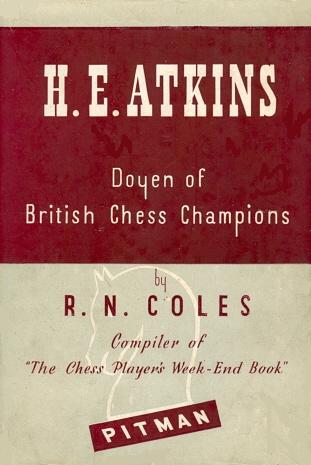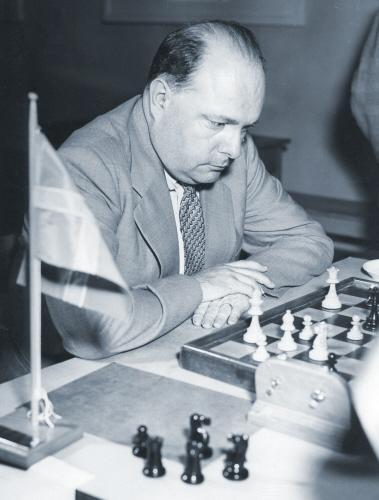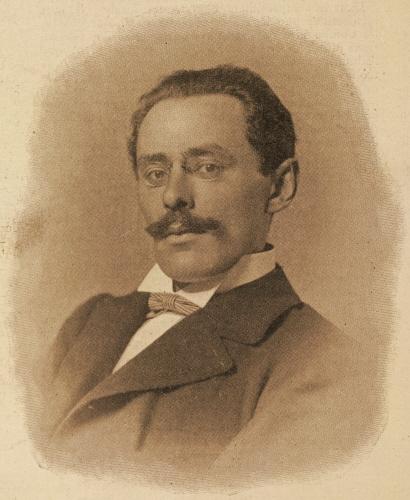
Edward Winter
In C.N. 18 we wrote:
‘Particular players particularly like particular moves. Bent Larsen is famously fond of flank pawn advances, such as a4/a5 or h4/h5. In his book H.E. Atkins: Doyen of British Chess Champions (London, 1952), R.N. Coles points out that the great player (nine times British champion between 1905 and 1925) regularly played f4 or ... f5 early in the game. We would welcome other instances of pet moves.’

Page 12 of the book concerns a game in which ‘Atkins employs a stratagem which was to become a favourite weapon in his armoury, the advance P-KB4 when both players have pawns on K4 and Q3’. A game annotation on page 31 mentions that Atkins ‘sees already the opportunity of playing his favourite P-KB4’.
A number of readers subsequently put forward proposals concerning other masters. In C.N. 409 W.H. Cozens (Ilminster, England) suggested Euwe’s Qb3/b6 and Suttles’ h4/h5. Hugh Myers (Davenport, IA, USA) wrote to offer g3/g6 for Suttles, and g4/g5 for Basman. A further contribution, in C.N. 620, came from Sixten Johansson (Göteborg, Sweden), who noted a pet move of Gideon Ståhlberg: ...c4 as Black in both the Queen’s Gambit Declined and the French Defence.

Gideon Ståhlberg
C.N. 740 quoted from pages 22-23 of Nigel Short: Chess Prodigy by David Short (London, 1981):
‘If Nigel has one “favourite move” it has to be e4-e5.’
In C.N. 1043 we wrote:
‘This theme was touched on by A. Soltis in Chess Life & Review, November 1979 (page 608). Crediting the BCM (no date given), Mr Soltis quoted the following: Marshall – Bd3/d6; Chigorin – e4/e5; Philidor – c3/c6; Morphy – f4/f5; Steinitz – f3/f6. He then added: Larsen – h4/h5; Karpov – Qcl or b1/c8 or b8; Fischer – Bc4/c5; Suttles – Nh3/h6; Spassky – d5/d4; Petrosian – b4/b5.’
Here it may be added that the BCM item for which Mr Soltis gave no exact source was the final part of an article by Stasch Mlotkowski on pages 134-135 of the May 1918 issue:

C.N. 1242 quoted an observation by W.H. Watts on page 20 of One-Hundred-and-One of My Best Games of Chess by F.D. Yates (London, 1934):
‘Having played through every game in this book at least three times I am convinced that P-KKt4 [g4/g5] after castling on the king’s side must have been adopted by Yates more often than by any other player.’
In C.N. 1518 a selection of Reshevsky’s early games was presented, and in the following item we noted how often, as White, he played Qe2 in the initial stages.
It may be noted too that Janowsky commented on Chigorin’s liking for ...Qe7. (See pages 15-16 of the 21 January 1903 issue of La Stratégie.) Annotating a game between Collijn and Mieses which began 1 e4 e5 2 d4 exd4 3 c3 dxc3 4 Bc4 cxb2 5 Bxb2 Qe7, Janowsky wrote:
‘Une variante de M. Tschigorine adoptée par lui au tournoi de Hannovre contre M. Mieses. Il est curieux de constater que M. Tschigorine a une prédilection particulière pour ce coup baroque, il le joue à tout propos; que ce soit dans la Partie Française, dans la Partie Viennoise ou dans le Gambit Danois, il le trouve toujours bon ... quant à nous [nous] le trouvons bon pour l’adversaire!’

Dawid Janowsky
All the above citations come from the pre-database age, being essentially founded on general impressions as to masters’ pet moves. It would be interesting to ascertain to what extent such beliefs are confirmed, invalidated or supplemented by computer research.
The above article originally appeared at ChessBase.com.
Olimpiu G. Urcan (Singapore) submits page 225 of Secret Notes by D. Bronstein and S. Voronkov (Oetwil a.S./Zurich, 2007), noting that page 230 states that the interview was conducted in Moscow in December 1998:

From page 59 of Modern Master-Play by F.D. Yates and W. Winter (London, 1929):
‘Marshall is very partial to posting a knight on Q4, and certainly the piece is very effective there, as he is within range of a number of vital squares, notably KB5 and K6. Of the latter Anderson [sic] said: “If a player can firmly plant a knight on K6 he can go to sleep for the rest of the game”.’
(9375)
To the Chess Notes main page.
To the Archives for other feature articles.
Copyright: Edward Winter. All rights reserved.